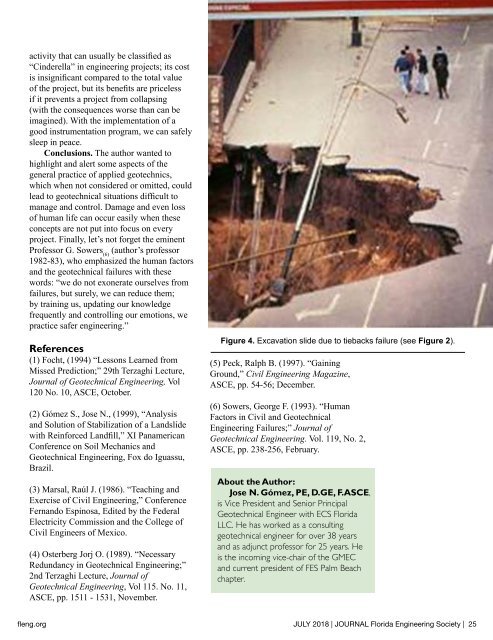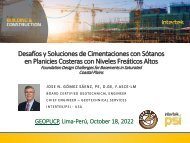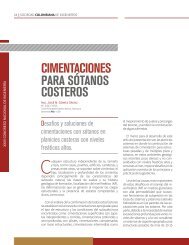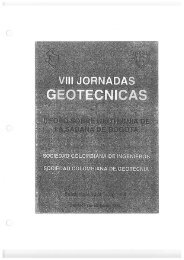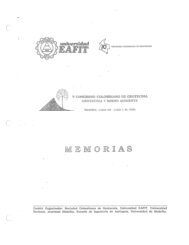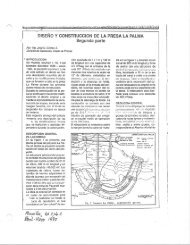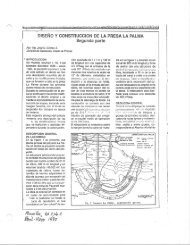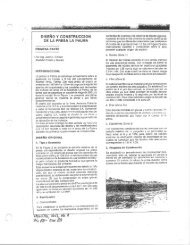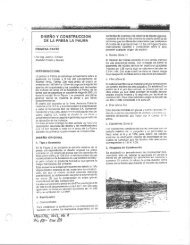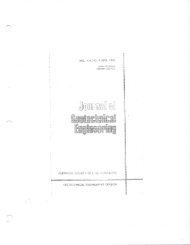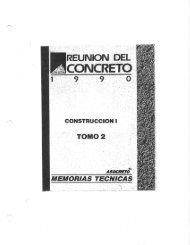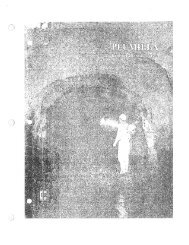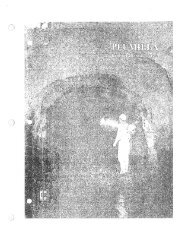Practical and Academic Geotechnical Reflections, 2018
The following article was published in the Florida Engineering Society (FES), July 2018 Journal dedicated annually to the enlightenment and education of Geotechnical Engineering. This article came to my mind as a result of teaching, mentoring, reviewing reports and supervising Geotechnical sites during four decades of my life. I say "Thank You" to my family, colleagues, co-workers and students who have supported me in my passionate pursuit of excellence in this rewarding field. Success of geotechnical projects depend on several coupling factors such as academic preparation, continuing education and professional experience. All of which, when well acquired allow for success and application of what is called “engineering judgment”. All three factors above become more relevant when one considers that geotechnics is not a precise science: rather instead, an art. As the legendary geotechnical engineer and professor, Ralph B. Peck(5) mentioned in one of his last memorable conferences, “geotechnics is an imprecise art”. It is possible that for lack of academic knowledge, poor experiences and even worse, an engineer that has been negligent in their basic duties, the following typically occur: (a) geotechnical exploration is insufficient, (b) application of basic geotechnical concepts are misled, (c) foundation design redundancy is not applied, and (d) instrumentation is not considered or does not have the appropriate scope to fulfill project needs. The goal of this article is to present orderly, important and practical geotechnical aspects (as listed above) to consider when involved in a project design or existing construction project in layman’s terms and without deepening into extended numerical theories. When these aspects are not accounted for properly or focus is missed during project development, generally the project quality and human safety could be compromised causing loss of life and/or loss of property. We are not exonerated from human factors and the geotechnical failures associated with it, but we strive to diminish them.
The following article was published in the Florida Engineering Society (FES), July 2018 Journal dedicated annually to the enlightenment and education of Geotechnical Engineering. This article came to my mind as a result of teaching, mentoring, reviewing reports and supervising Geotechnical sites during four decades of my life. I say "Thank You" to my family, colleagues, co-workers and students who have supported me in my passionate pursuit of excellence in this rewarding field.
Success of geotechnical projects depend on several coupling factors such as academic preparation, continuing education and professional experience. All of which, when well acquired allow for success and application of what is called “engineering judgment”. All three factors above become more relevant when one considers that geotechnics is not a precise science: rather instead, an art. As the legendary geotechnical engineer and professor, Ralph B. Peck(5) mentioned in one of his last memorable conferences, “geotechnics is an imprecise art”.
It is possible that for lack of academic knowledge, poor experiences and even worse, an engineer that has been negligent in their basic duties, the following typically occur: (a) geotechnical exploration is insufficient, (b) application of basic geotechnical concepts are misled, (c) foundation design redundancy is not applied, and (d) instrumentation is not considered or does not have the appropriate scope to fulfill project needs.
The goal of this article is to present orderly, important and practical geotechnical aspects (as listed above) to consider when involved in a project design or existing construction project in layman’s terms and without deepening into extended numerical theories. When these aspects are not accounted for properly or focus is missed during project development, generally the project quality and human safety could be compromised causing loss of life and/or loss of property. We are not exonerated from human factors and the geotechnical failures associated with it, but we strive to diminish them.
You also want an ePaper? Increase the reach of your titles
YUMPU automatically turns print PDFs into web optimized ePapers that Google loves.
activity that can usually be classified as<br />
“Cinderella” in engineering projects; its cost<br />
is insignificant compared to the total value<br />
of the project, but its benefits are priceless<br />
if it prevents a project from collapsing<br />
(with the consequences worse than can be<br />
imagined). With the implementation of a<br />
good instrumentation program, we can safely<br />
sleep in peace.<br />
Conclusions. The author wanted to<br />
highlight <strong>and</strong> alert some aspects of the<br />
general practice of applied geotechnics,<br />
which when not considered or omitted, could<br />
lead to geotechnical situations difficult to<br />
manage <strong>and</strong> control. Damage <strong>and</strong> even loss<br />
of human life can occur easily when these<br />
concepts are not put into focus on every<br />
project. Finally, let’s not forget the eminent<br />
Professor G. Sowers (6)<br />
(author’s professor<br />
1982-83), who emphasized the human factors<br />
<strong>and</strong> the geotechnical failures with these<br />
words: “we do not exonerate ourselves from<br />
failures, but surely, we can reduce them;<br />
by training us, updating our knowledge<br />
frequently <strong>and</strong> controlling our emotions, we<br />
practice safer engineering.”<br />
References<br />
(1) Focht, (1994) “Lessons Learned from<br />
Missed Prediction;” 29th Terzaghi Lecture,<br />
Journal of <strong>Geotechnical</strong> Engineering, Vol<br />
120 No. 10, ASCE, October.<br />
(2) Gómez S., Jose N., (1999), “Analysis<br />
<strong>and</strong> Solution of Stabilization of a L<strong>and</strong>slide<br />
with Reinforced L<strong>and</strong>fill,” XI Panamerican<br />
Conference on Soil Mechanics <strong>and</strong><br />
<strong>Geotechnical</strong> Engineering, Fox do Iguassu,<br />
Brazil.<br />
(3) Marsal, Raúl J. (1986). “Teaching <strong>and</strong><br />
Exercise of Civil Engineering,” Conference<br />
Fern<strong>and</strong>o Espinosa, Edited by the Federal<br />
Electricity Commission <strong>and</strong> the College of<br />
Civil Engineers of Mexico.<br />
(4) Osterberg Jorj O. (1989). “Necessary<br />
Redundancy in <strong>Geotechnical</strong> Engineering;”<br />
2nd Terzaghi Lecture, Journal of<br />
<strong>Geotechnical</strong> Engineering, Vol 115. No. 11,<br />
ASCE, pp. 1511 - 1531, November.<br />
Figure 4. Excavation slide due to tiebacks failure (see Figure 2).<br />
(5) Peck, Ralph B. (1997). “Gaining<br />
Ground,” Civil Engineering Magazine,<br />
ASCE, pp. 54-56; December.<br />
(6) Sowers, George F. (1993). “Human<br />
Figure 4. Excavation slide due to tiebacks fail<br />
Factors in Civil <strong>and</strong> <strong>Geotechnical</strong><br />
Engineering Failures;” Journal of<br />
<strong>Geotechnical</strong> Engineering. Vol. 119, No. 2,<br />
ASCE, pp. 238-256, February.<br />
About the Author:<br />
Jose N. Gómez, PE, D.GE, F.ASCE,<br />
is Vice President <strong>and</strong> Senior Principal<br />
<strong>Geotechnical</strong> Engineer with ECS Florida<br />
LLC. He has worked as a consulting<br />
geotechnical engineer for over 38 years<br />
<strong>and</strong> as adjunct professor for 25 years. He<br />
is the incoming vice-chair of the GMEC<br />
<strong>and</strong> current president of FES Palm Beach<br />
chapter.<br />
fleng.org JULY <strong>2018</strong> | JOURNAL Florida Engineering Society | 25


